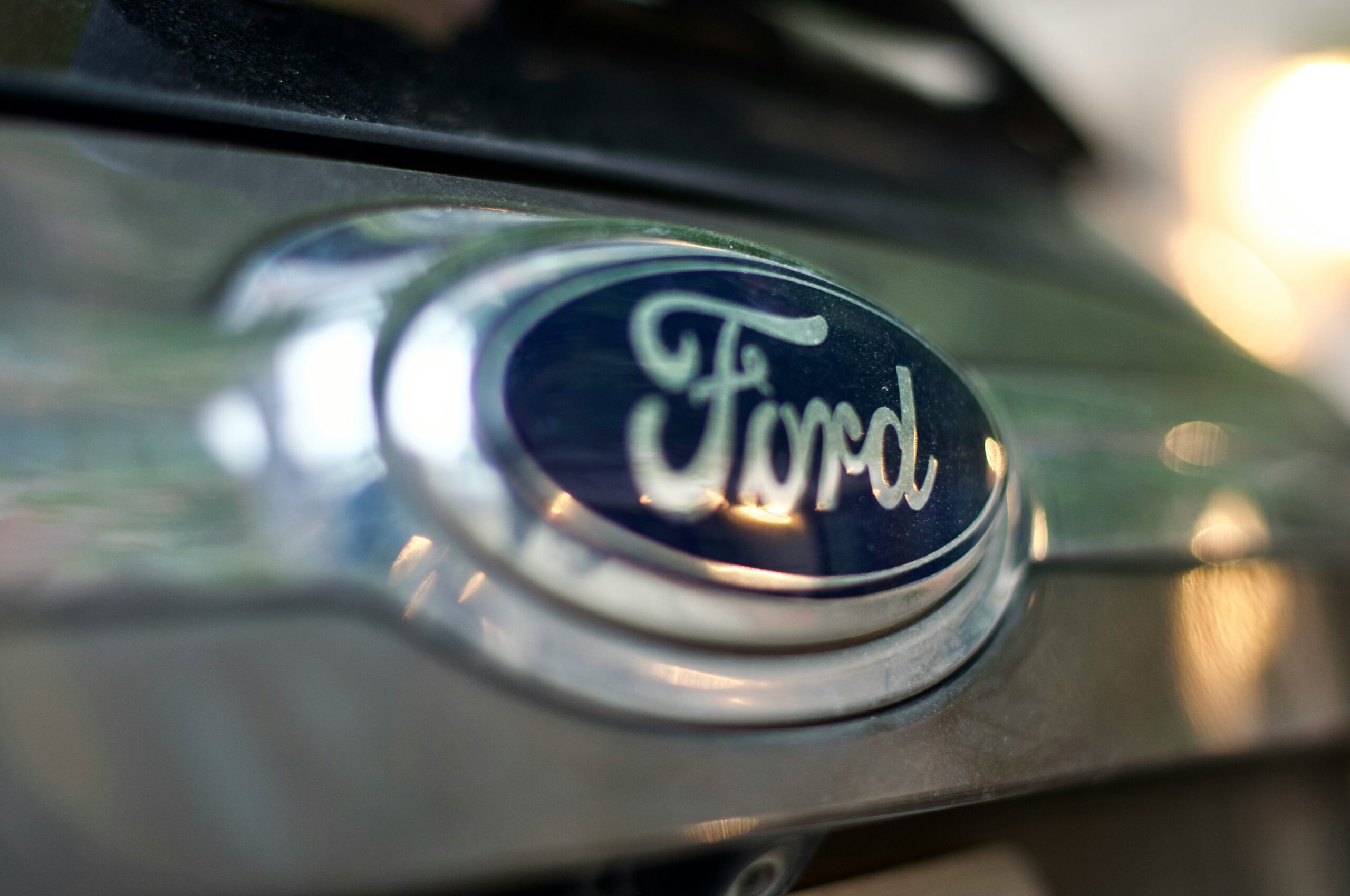Ford Logo: Meaning, History, Design Influences, and Evolution

From its inception in 1903, Ford Motor Company has become synonymous with innovation, reliability, and iconic design. Over the years, one of the most recognizable symbols of the brand has been the Ford logo. In this article, we will dive into the meaning, history, design influences, and evolution of the Ford logo, exploring how it has shaped the brand’s identity and global recognition.
Understanding the Ford Logo
Before we delve into the significance of the Ford logo, let’s take a moment to understand its design elements. The current Ford logo features a distinctive, oval shape, with the company name boldly displayed in a well-balanced font. The iconic blue color exudes a sense of trust and reliability, while the silver border adds a touch of sophistication.
When examining the Ford logo, one cannot overlook the subtle nuances that contribute to its overall impact. The curvature of the oval shape symbolizes continuity and fluidity, mirroring the brand’s commitment to innovation and progress. Additionally, the deliberate choice of font conveys a sense of stability and authority, reflecting Ford’s longstanding reputation as a leader in the automotive industry.
The Meaning Behind the Ford Logo
Every great logo has a story to tell, and the Ford logo is no exception. At its core, the logo represents the vision and values of its founder, Henry Ford. The font used in the logo exudes strength, while the oval shape suggests unity and forward motion. The blue color symbolizes trust, reliability, and integrity, traits that have defined the Ford brand for over a century.
Furthermore, the silver border surrounding the logo serves as a subtle nod to the brand’s commitment to quality and craftsmanship. It reflects Ford’s attention to detail and dedication to producing vehicles that not only perform exceptionally but also exude a sense of elegance and sophistication.

The Historical Journey of the Ford Logo
The Ford logo has undergone several transformations throughout its history. In the early years, Ford used intricate script-based logos, reflecting the elegance and craftsmanship of the time. As the brand evolved, so did the logo, adapting to the changing trends and demands of the automotive industry. The journey from the original script logo to the modern, sleek design we see today is a testament to the brand’s ability to adapt and stay relevant.
Each iteration of the Ford logo tells a unique story, encapsulating the spirit of the era in which it was created. From the ornate designs of the past to the minimalist approach embraced in recent years, the evolution of the Ford logo mirrors the evolution of the brand itself – constantly innovating, yet always staying true to its core values.
The Design Influences on the Ford Logo
Design influences play a crucial role in shaping any logo, and the Ford logo is no exception. Let’s explore the various design elements that have influenced the evolution of the Ford logo.

The Initial Design Concepts
When Henry Ford first envisioned the logo for his company, he sought simplicity and elegance. The script-based logos of the early years were influenced by the prevailing design trends of the time, evoking a sense of craftsmanship and attention to detail. These early design concepts set the foundation for future iterations of the logo.
One key influence on the initial design of the Ford logo was Henry Ford’s own vision of democratizing the automobile industry. This vision of making cars affordable and accessible to the masses was reflected in the logo’s design, which aimed to convey a sense of reliability and trustworthiness to potential customers.
The Evolution of Design Over the Years
As the automotive industry progressed, so did the design language of the Ford logo. With advances in technology and a shifting cultural landscape, the logo underwent various design changes, adapting to the evolving tastes of consumers. From sleeker fonts to more streamlined shapes, each iteration of the logo reflected the changing times.
During the mid-20th century, the Ford logo underwent a significant transformation influenced by the rise of modernism in design. The logo embraced clean lines, geometric shapes, and a minimalist approach, mirroring the design ethos of the era. This shift towards a more modern aesthetic not only kept the logo relevant but also positioned Ford as a forward-thinking and innovative brand in the automotive industry.
The Evolution of the Ford Logo
Over the years, the Ford logo has witnessed significant transformations, signifying various milestones in the brand’s history.

Since its inception in 1903, the Ford logo has undergone several notable changes, each marking a new chapter in the company’s journey. In the early years, the logo featured intricate script lettering, reflecting the elegance and sophistication of the era. However, as Ford’s influence and reach expanded, a more robust and industrial design language emerged, leading to the adoption of a block-based logo in 1912.
Major Changes in the Ford Logo
One of the most significant changes in the Ford logo occurred in 1912 when the script-based logo was replaced by a block-based design. This change reflected the company’s growing influence and signified a shift towards a more modern and industrial aesthetic. Since then, the logo has seen further refinements, with each update embracing the evolving design trends of the time.
Throughout the decades, the Ford logo has evolved in response to changing cultural and design landscapes. From the streamlined look of the 1950s to the sleek and minimalistic approach of the 21st century, each iteration of the logo has captured the essence of its respective era while staying true to Ford’s core values of innovation and progress.
The Current Logo and Its Significance
The current Ford logo, introduced in 2003, is a testament to the brand’s timeless appeal and enduring legacy. With its bold font, elegant oval shape, and iconic blue color, the logo represents the brand’s commitment to quality, innovation, and consumer trust. It serves as a powerful symbol of the brand’s rich heritage and its ongoing pursuit of excellence.
As Ford continues to innovate and adapt to the changing automotive landscape, the logo remains a constant symbol of the company’s resilience and forward-thinking approach. Its iconic design not only pays homage to Ford’s storied past but also serves as a beacon guiding the brand towards a future filled with new possibilities and achievements.
The Impact of the Ford Logo
Symbolism and design elements go beyond aesthetics; they have a profound impact on a brand’s identity and recognition. Let’s explore the far-reaching influence of the Ford logo.
The Logo’s Influence on Brand Identity
A strong logo is crucial in establishing a brand’s identity, and the Ford logo has undoubtedly played a pivotal role in shaping the brand’s image. The logo’s timeless design and recognizable elements have become synonymous with Ford’s values of quality, innovation, and trust. It has created a sense of familiarity and loyalty among consumers, contributing to the brand’s continued success.
The Logo’s Role in Ford’s Global Recognition
The Ford logo has transcended geographical boundaries, cementing the brand’s global recognition. The logo’s universal appeal has helped Ford establish a strong presence in various markets worldwide. It serves as a visual representation of Ford’s commitment to excellence, enabling the brand to connect with consumers on a global scale.
In conclusion, the Ford logo is much more than a mere symbol; it is a reflection of the brand’s rich history, design influences, and evolution. Through its timeless design and meaningful elements, the logo has become an integral part of Ford’s identity, shaping the brand’s reputation and global recognition. As Ford continues to innovate and thrive in the automotive industry, the logo will undoubtedly remain a powerful symbol of the brand’s enduring legacy.
Now that you’ve explored the iconic journey of the Ford logo, it’s clear that a well-crafted logo is pivotal in narrating your brand’s story and carving out a unique identity. If you’re inspired to embark on your own logo creation adventure, meet Boon – your personal design assistant. Boon harnesses the power of Artificial Intelligence to blend your logo design preferences into a custom logo that resonates with your brand’s ethos. Whether you’re in the automotive industry or any other, Boon can help you engage users, tell a compelling story, and strengthen your business presence. Ready to create a logo that stands the test of time, just like Ford’s? Let’s make a logo!
